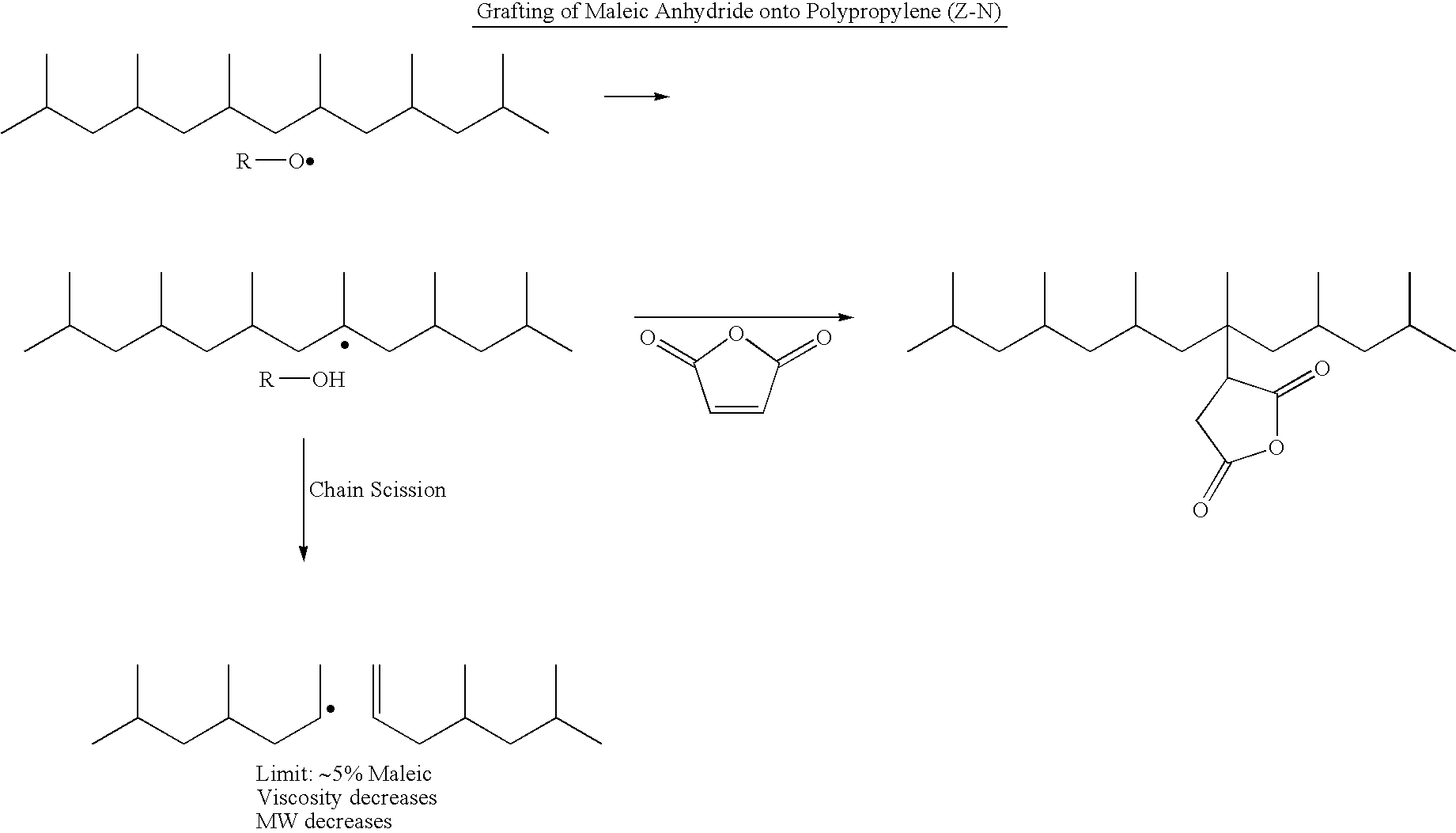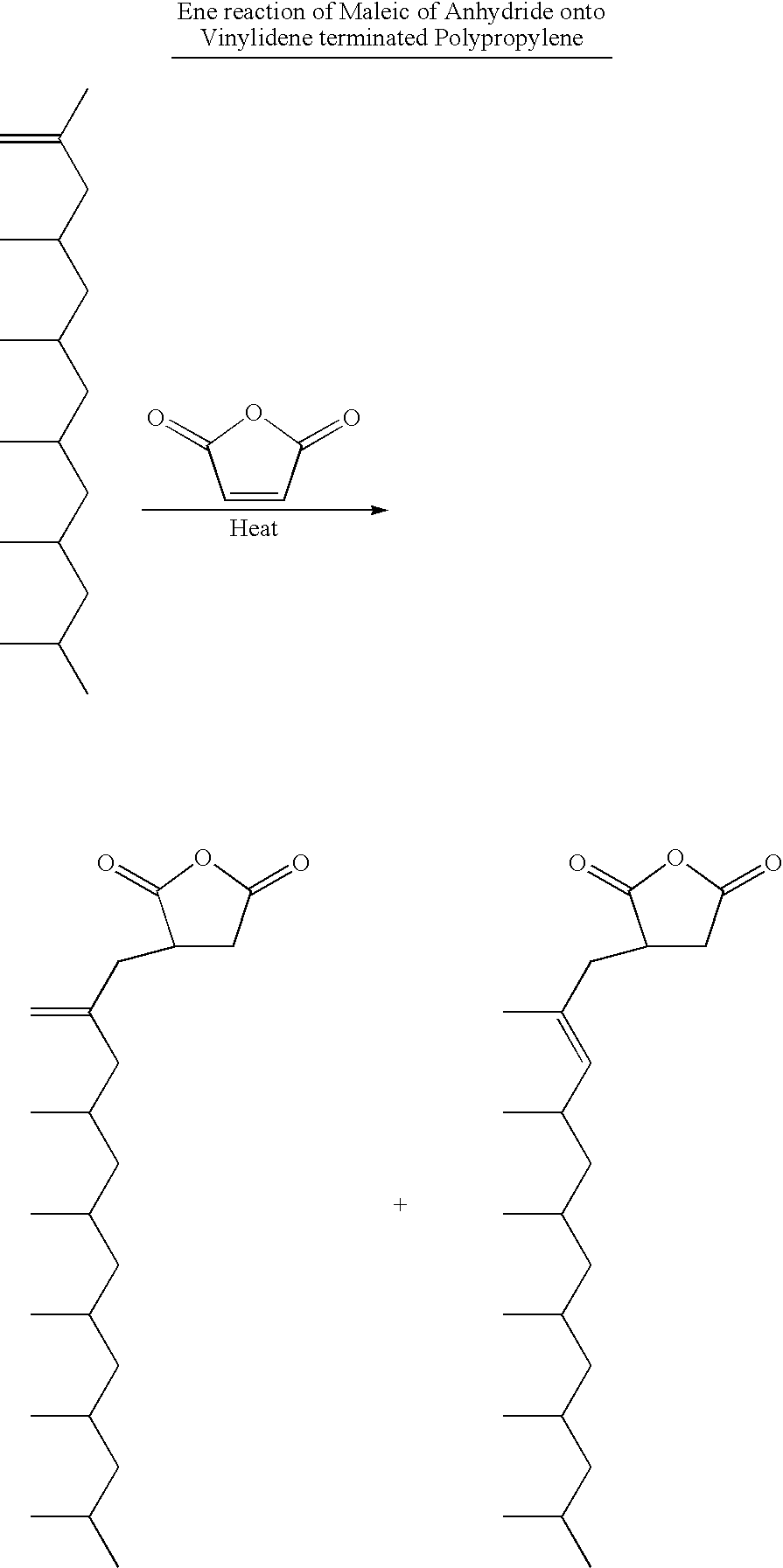Polypropylene having a high maleic anhydride content
a polypropylene and high maleic anhydride technology, applied in the field of polypropylene, can solve the problems of difficult to increase the amount of maleic anhydride, lack of polar functional groups in the polymer to provide reactive sites, and low functional group content, and achieve the effect of increasing the content of succinic anhydrid
- Summary
- Abstract
- Description
- Claims
- Application Information
AI Technical Summary
Benefits of technology
Problems solved by technology
Method used
Image
Examples
examples
[0048]Several batches of the inventive material have been made. They are listed below along with data from Eastman® E43 and Eastman® AP550 polypropylenes. All of the starting polypropylenes (abbreviated as PP-x) were propylene homopolymers except for PP-D and PP-E which were propylene-hexene copolymers. The purpose of using the copolymers is to lower the melting point while not significantly affecting the molecular weight.
General Maleic Anhydride Grafting Procedure
[0049]250 g of the ene reaction product of PP-C was placed in a reaction kettle with an agitator, an addition funnel, a temperature probe and a nitrogen inlet. Temperature was maintained at 185° C. 20 g of maleic anhydride was dissolved in 24 mL of acetone at room temperature, then 6 g of di-t-butyl peroxide was added and mixed well. The solution mixture was transferred to the addition funnel and was added dropwise to the 185° C. reaction mass over 3 hours. Reaction was tailed off for an additional 1 hour. The grafted prod...
PUM
| Property | Measurement | Unit |
|---|---|---|
| Mn molecular weight | aaaaa | aaaaa |
| temperature | aaaaa | aaaaa |
| temperature | aaaaa | aaaaa |
Abstract
Description
Claims
Application Information
 Login to View More
Login to View More - R&D
- Intellectual Property
- Life Sciences
- Materials
- Tech Scout
- Unparalleled Data Quality
- Higher Quality Content
- 60% Fewer Hallucinations
Browse by: Latest US Patents, China's latest patents, Technical Efficacy Thesaurus, Application Domain, Technology Topic, Popular Technical Reports.
© 2025 PatSnap. All rights reserved.Legal|Privacy policy|Modern Slavery Act Transparency Statement|Sitemap|About US| Contact US: help@patsnap.com



